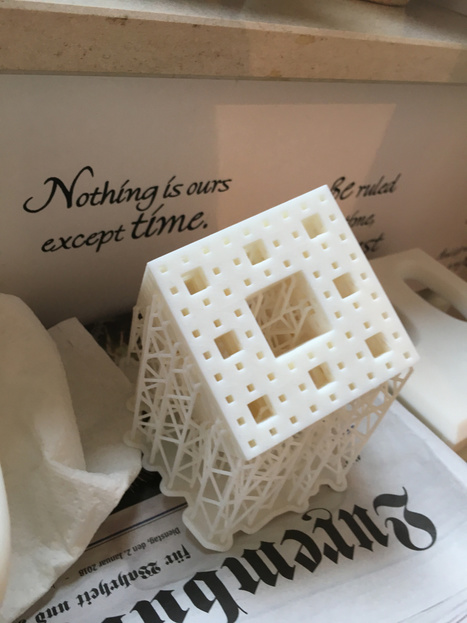Recently I bought myself the latest model of 3D-printers from Formlabs, the Form2.
The Form 2 delivers high-resolution prints in Industrial 3D printing quality and it is very, very expensive. (I had been waiting (and saving money) for 3 years until I made the financial plunge to get such a machine)
But it has the huge advantage that dosen’t require a lot of tweaking and experimenting to run, you just take it out of the box, you install it and it runs !! It comes with the right software, the materials you need to use are in sich a packaging (1 Liter resin cartridges !) that you can concentrate on the objet you’re printing and not on the maintenance of the machine. The system recognises the resin type, configures settings, and allows you to keep track of resin supplies.
The Form 2 is a SLA printer where SLA stand for Stereolithography. SLA is an additive manufacturing – commonly referred to as 3D printing – technology that converts liquid materials into solid parts, layer by layer, by selectively curing them using a light source in a process called photopolymerization. SLA is widely used to create models, prototypes, patterns, and production parts for a range of industries from engineering and product design to manufacturing, dentistry, jewelry, model making, and education.
Learn more / En savoir plus / Mehr erfahren:
https://www.scoop.it/t/21st-century-learning-and-teaching/?&tag=3D-Printing
Via Gust MEES



 Your new post is loading...
Your new post is loading...












Recently I bought myself the latest model of 3D-printers from Formlabs, the Form2.
The Form 2 delivers high-resolution prints in Industrial 3D printing quality and it is very, very expensive. (I had been waiting (and saving money) for 3 years until I made the financial plunge to get such a machine)
But it has the huge advantage that dosen’t require a lot of tweaking and experimenting to run, you just take it out of the box, you install it and it runs !! It comes with the right software, the materials you need to use are in sich a packaging (1 Liter resin cartridges !) that you can concentrate on the objet you’re printing and not on the maintenance of the machine. The system recognises the resin type, configures settings, and allows you to keep track of resin supplies.
The Form 2 is a SLA printer where SLA stand for Stereolithography. SLA is an additive manufacturing – commonly referred to as 3D printing – technology that converts liquid materials into solid parts, layer by layer, by selectively curing them using a light source in a process called photopolymerization. SLA is widely used to create models, prototypes, patterns, and production parts for a range of industries from engineering and product design to manufacturing, dentistry, jewelry, model making, and education.
Learn more / En savoir plus / Mehr erfahren:
https://www.scoop.it/t/21st-century-learning-and-teaching/?&tag=3D-Printing